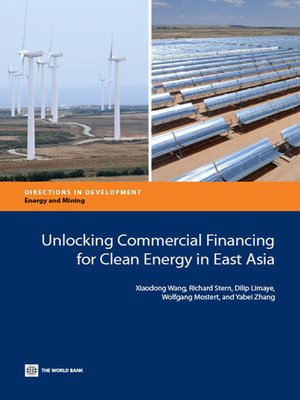Unlocking Commercial Financing for Clean Energy in East Asia
ebook ∣ Directions in Development
By Xiaodong Wang

Sign up to save your library
With an OverDrive account, you can save your favorite libraries for at-a-glance information about availability. Find out more about OverDrive accounts.
Find this title in Libby, the library reading app by OverDrive.



Search for a digital library with this title
Title found at these libraries:
| Library Name | Distance |
|---|---|
| Loading... |
Unlocking Commercial Financing for Clean Eneargy in East Asia was written for government decision makers in middle and high-income countries, members of international financing communities, and practitioners. In East Asia, all middle-income countries have national targets for energy efficiency and renewable energy, and some even have targets for carbon reduction. However, a major hurdle to achieving a sustainable energy path is mobilizing the required financing. Policy makers must determine how to unlock commercial financing to scale up clean energy investments. Unlocking Commercial Financing for Clean Energy in East Asia builds on recent experience in applying public financing instruments and attempts to address the following issues: when and under what circumstances to use public financing instruments, which instrument to select, and how to design and implement them most effectively. First and foremost, effective and conducive policies are essential to catalyzing commercial investment in clean energy. Once the right policy regime has been put in place, public financing mechanisms designed to mitigate risks and close financing gaps have proven to play a major catalytic role in kick-starting substantial investments in clean energy. Public financing mechanisms for energy efficiency are particularly important to mitigating financiers' risk perceptions, to aggregating small deals, and to enhancing the interest and capacity of domestic banks. Public financing for renewable energy can provide long-term loan tenure to match the long payback period, mitigate technology risks, and
increase access to financing for small and medium enterprises. The selection of public financing instruments should be tailored to the market barriers, the targeted market segments, the regulatory environment, and the maturity of the financial market. Engaging domestic banks through credit lines and guarantees has had the greatest impact in unlocking private financing. Dedicated funds and mezzanine and equity funds can effectively increase access to financing for small and medium enterprises and clean energy start-ups. Finally, the impact of public financing instruments can be substantially increased if they are packaged with technical assistance.







